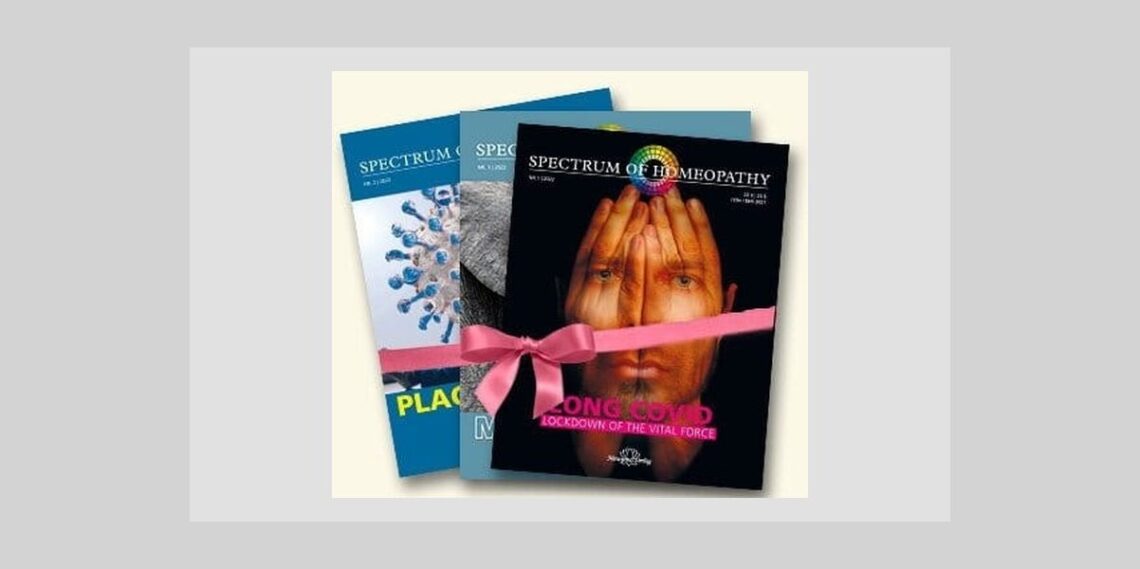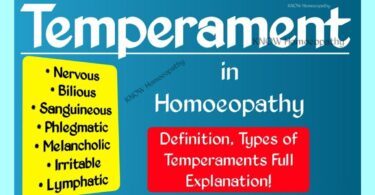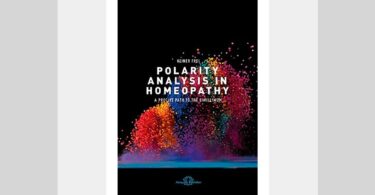I recently read the first issue of a new journal “Spectrum of Homeopathy” by Narayana Publishers. ‘Narayana Publishers’ was set up by Herbert Sigwart and Ulrich Welte in 1980. Their aim is to offer the homeopathic classics to as wide an audience as possible, at the best possible prices. They have been publishing about 30 new English and German titles each year. Their selection of books aims to combine the new trends in homeopathy with the major classical works that are still as valid today as when they were published many years ago.
In keeping with their aim, this new journal, Spectrum of Homeopathy, has been introduced to the homeopathic world. The name is perfectly apt because they want to continuously give us fresh and stimulating articles from the entire spectrum of homeopathic practice. There is no intention of promoting or advocating any particular school or trend in homeopathy. They hope to achieve a positive interaction between all the manifold ways in homeopathy, for not just the experienced practitioner but for the beginner as well.

Contributing authors are internationally renowned including Anne Schadde, Rajan Sankaran, Christoph Schubert, Ulrich Welte, Markus Kuntosch, Jan Scholten, Louis Klein, Juergen Hansel, Patricia Le Roux, Massimo Mangialovori, Andreas Richter, Amy Rothenberg, Juergen Weiland, Frans Kusse, Joerg Wichmann.
Juergen Weiland discusses how a remedy prepared from human placenta can be useful for children with difficulties establishing contact with the world. Jan Scholten, Ulrich Welte and Markus Kuntosch show how remedies from the Lanthanides and Lithium seem to eb suitable for children in the Autism spectrum. Joerg Wichmann, Louis Klein and Patricia Le Roux present how remedies from the butterfly-moth and orchid families can be very useful for children with ADHD issues.
Massimo Mangialavori gives a case of Anantherum and shows how the syndrome of allergy, restlessness, ambitiousness and jealousy is typical of certain grasses and how this makes these grasses suitable for hyperactive children without pronounced ADHD. Anne Schadde presents a good case of Ozone.
Amy Rothenberg discusses the case taking approach for children with special needs and how homeopathy is capable of helping them achieve their optimal potential. Rajan Sankaran shows how he selected Black Mamba for a girl with extreme aggression.
Juergen Hansel has presented an interesting case of Gallicum acidum where there were fears of contact and aggressive behavioral disturbances that prevented social integration. Andreas Richter shows how the potentised remedy Fenoterol hydrobromide can be used with efficacy in children who have been exposed to this drug pre-birth for preventing premature labour.
Frans Kusse discusses case taking and remedy selection at different levels of experience as per Dr. Sankaran’s method. Apart from these cases, the issue reviews some seminars in 2009.
A moving article was the travelog by Rosina Sonnenschmidt where she highlights how homeopath Torako Yui, despite all odds, managed to convince Japanese authorities of the soundness of homeopathy and Hahnemann’s approach and managed to bring homeopathy to Japan in a major way. Very encouraging and spirit-lifting!
There are reviews of five books – Patricia Le Roux’s Butterflies, Louis Klein’s Miasms and Nosodes, Rajan Sankaran’s The Other Song, Kat Birch’s Vaccine Free and Rosina Sonnenschmidt’s Liver and Gallbladder. There is a nice history of Narayana Publishers along with photographs of their enthusiastic and dedicated team.
The layout is very good, paper and photo/picture quality is also excellent. Photos by Juergen Weiland throughout the journal are beautiful. I wish that there had been more cases showing the use of our older, ‘regular’ remedies. All in all, this issue was a very good read and I will definitely say that ‘Spectrum of Homeopathy’ holds a lot of promise! The next issue will cover the power drugs, from coca and cola to the amphetamines while the last issue for this year will deal with old and new facets of the miasms. Something to look forward to!!





DR. FERUZI’S WORK IS MARVALOUS AND VERY MUCH KNOWLEDEFUL. I LIKED IT VERY MUCH.KEEP UP PLZ.
Thank you for your kind comments, Dr. Hafeez Ullah, but the real credit goes to the authors of the articles in the journal and to Narayana Publishers for the journal’s creation.